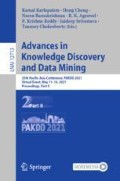Abstract
This research proposes a global forecasting and inference method based on recurrent neural networks (RNN) to predict policy interventions’ causal effects on an outcome over time through the counterfactual approach. The traditional univariate methods that operate within the well-established synthetic control method have strong linearity assumptions in the covariates. This has recently been addressed by successfully using univariate RNNs for this task. We use an RNN trained not univariately per series but globally across all time series, which allows us to model treated and control time series simultaneously over the pre-treatment period. Therewith, we do not need to make equivalence assumptions between distributions of the control and treated outcomes in the pre-treatment period. This allows us to achieve better accuracy and precisely isolate the effect of an intervention. We compare our novel approach with local univariate approaches on two real-world datasets on 1) how policy changes in Alcohol outlet licensing affect emergency service calls, and 2) how COVID19 lockdown measures affect emergency services use. Our results show that our novel method can outperform the accuracy of state-of-the-art predictions, thereby estimating the size of a causal effect more accurately. The experimental results are statistically significant, indicating our framework generates better counterfactual predictions.
Acknowledgments to Turning Point researchers who code the NASS data and ambulance services and paramedics who create and provide that data.
Access this chapter
Tax calculation will be finalised at checkout
Purchases are for personal use only
References
Abadie, A., Diamond, A., Hainmueller, J.: Synthetic control methods for comparative case studies: estimating the effect of California’s tobacco control program. J. Am. Stat. Assoc. 105(490), 493–505 (2010)
Athey, S., Chetty, R., Imbens, G., Kang, H.: Estimating treatment effects using multiple surrogates: The role of the surrogate score and the surrogate index. arXiv preprint arXiv:1603.09326 (2016)
Athey, S., Imbens, G.W.: Identification and inference in nonlinear difference-in-differences models. Econometrica 74(2), 431–497 (2006)
Bandara, K., Bergmeir, C., Smyl, S.: Forecasting across time series databases using recurrent neural networks on groups of similar series: a clustering approach. Expert Syst. Appl. 140, 112896 (2020)
Bandara, K., Bergmeir, C., Campbell, S., Scott, D., Lubman, D.: Towards accurate predictions and causal ‘what-if’ analyses for planning and policy-making: a case study in emergency medical services demand. In: IJCNN, pp. 1–10. IEEE (2020)
Bandara, K., Bergmeir, C., Hewamalage, H.: LSTM-MSNet: leveraging forecasts on sets of related time series with multiple seasonal patterns. IEEE TNNLS (2020)
Bandara, K., Shi, P., Bergmeir, C., Hewamalage, H., Tran, Q., Seaman, B.: Sales demand forecast in e-commerce using a long short-term memory neural network methodology. In: Gedeon, T., Wong, K.W., Lee, M. (eds.) ICONIP 2019, Part III. LNCS, vol. 11955, pp. 462–474. Springer, Cham (2019). https://doi.org/10.1007/978-3-030-36718-3_39
Brodersen, K.H., Gallusser, F., Koehler, J., Remy, N., Scott, S.L.: Inferring causal impact using Bayesian structural time-series models. Ann. Appl. Stat. 9(1), 247–274 (2015)
Chandrasekhar, A.: Econometrics of network formation. In: The Oxford Handbook of the Economics of Networks, pp. 303–357 (2016)
Cleveland, R., Cleveland, W., McRae, J., Terpenning, I.: STL: a seasonal-trend decomposition procedure based on loess. J. Off. Stat. 6(1), 3–33 (1990)
Lubman, D.I., et al.: The national ambulance surveillance system. PLoS One 15, e0228316 (2020)
Farrell, M.H., Liang, T., Misra, S.: Deep neural networks for estimation and inference. arXiv preprint arXiv:1809.09953 (2018)
Granger, C.W.: Testing for causality: a personal viewpoint. J. Econ. Dyn. Control 2, 329–352 (1980)
Hartford, J., Lewis, G., Leyton-Brown, K., Taddy, M.: Deep IV: a flexible approach for counterfactual prediction. In: ICML, pp. 1414–1423 (2017)
Hewamalage, H., Bergmeir, C., Bandara, K.: Recurrent neural networks for time series forecasting: current status and future directions. Int. J. Forecast. 37(1), 388–427 (2020)
Hutter, F., Hoos, H.H., Leyton-Brown, K.: Sequential model-based optimization for general algorithm configuration. In: Coello, C.A.C. (ed.) LION 2011. LNCS, vol. 6683, pp. 507–523. Springer, Heidelberg (2011). https://doi.org/10.1007/978-3-642-25566-3_40
Imbens, G.W., Lemieux, T.: Regression discontinuity designs: a guide to practice. J. Econ. 142(2), 615–635 (2008)
Imbens, G.W., Rubin, D.B.: Causal Inference in Statistics, Social, and Biomedical Sciences. Cambridge University Press, Cambridge (2015)
Januschowski, T., et al.: Criteria for classifying forecasting methods. Int. J. Forecast. 36(1), 167–177 (2020)
Johansson, F., Shalit, U., Sontag, D.: Learning representations for counterfactual inference. In: International Conference on Machine Learning, pp. 3020–3029 (2016)
Lim, B.: Forecasting treatment responses over time using recurrent marginal structural networks. NeurIPS 18, 7483–7493 (2018)
Nauta, M., Bucur, D., Seifert, C.: Causal discovery with attention-based convolutional neural networks. ML Knowl. Extr. 1(1), 312–340 (2019)
Poulos, J.: RNN-based counterfactual prediction. arXiv preprint arXiv:1712.03553 (2017)
Rubin, D.B.: Estimating causal effects of treatments in randomized and nonrandomized studies. J. Educ. Psycho. 66(5), 688 (1974)
Shi, C., Blei, D., Veitch, V.: Adapting neural networks for the estimation of treatment effects. In: NeurIPS. pp. 2507–2517 (2019)
Steinkraus, A.: Estimating treatment effects with artificial neural nets: a comparison to synthetic control method. Econ. Bull. 39(4), 2778–2791 (2019)
Author information
Authors and Affiliations
Corresponding authors
Editor information
Editors and Affiliations
Rights and permissions
Copyright information
© 2021 Springer Nature Switzerland AG
About this paper
Cite this paper
Grecov, P. et al. (2021). Causal Inference Using Global Forecasting Models for Counterfactual Prediction. In: Karlapalem, K., et al. Advances in Knowledge Discovery and Data Mining. PAKDD 2021. Lecture Notes in Computer Science(), vol 12713. Springer, Cham. https://doi.org/10.1007/978-3-030-75765-6_23
Download citation
DOI: https://doi.org/10.1007/978-3-030-75765-6_23
Published:
Publisher Name: Springer, Cham
Print ISBN: 978-3-030-75764-9
Online ISBN: 978-3-030-75765-6
eBook Packages: Computer ScienceComputer Science (R0)

